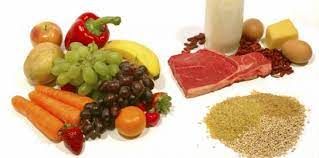Hygienic Foods
Hygienic foods, also known as sanitary or clean foods, refer to food items that are prepared and handled in a way that minimizes the risk of contamination and promotes food safety. These foods are typically free from harmful microorganisms, chemicals, and other contaminants that could pose a threat to human health. While there is no specific list of hygienic foods, here are some general characteristics and practices that contribute to maintaining food hygiene:
- Fresh and properly stored ingredients: Hygienic foods prioritize the use of fresh and high-quality ingredients. Proper storage techniques, such as refrigeration or appropriate temperature control, help prevent the growth of bacteria and maintain food freshness.
- Clean preparation areas: Hygienic food preparation involves maintaining clean and sanitized kitchen surfaces, utensils, and equipment. Regular cleaning routines, including washing hands and using separate cutting boards for different food items, are essential to avoid cross-contamination.
- Safe handling and storage: Proper handling of food is crucial to prevent contamination. This includes storing food at safe temperatures, separating raw and cooked foods to prevent cross-contamination, and avoiding contact between ready-to-eat foods and uncooked ingredients.
- Cooking at appropriate temperatures: Thorough cooking kills harmful bacteria and parasites present in certain foods. Following recommended cooking temperatures and times ensures that the food is safe to consume.
- Hygienic food service: Restaurants, food vendors, and other food establishments must adhere to food safety regulations and best practices. This includes maintaining clean and hygienic environments, ensuring proper food storage and handling, and training staff in safe food preparation techniques.
It's important to note that food safety standards may vary between countries and regions, and specific regulations and guidelines are in place to ensure the hygienic preparation and handling of food. Always consult local authorities or health organizations for detailed information and recommendations regarding food hygiene in your area.
Benefits Of Hygienic Foods
Consuming hygienic foods offers several benefits for both individuals and communities. Here are some of the key advantages:
- Reduced risk of foodborne illnesses: Hygienic foods are prepared and handled in a manner that minimizes the risk of contamination by harmful microorganisms such as bacteria, viruses, and parasites. By following proper hygiene practices, the likelihood of foodborne illnesses, such as salmonella, E. coli, or norovirus infections, is significantly reduced.
- Improved food safety: Hygienic food practices prioritize cleanliness, proper storage, and safe handling techniques. This reduces the potential for food spoilage, the growth of pathogens, and the presence of hazardous chemicals or toxins. Ensuring food safety helps protect consumers from various health risks associated with contaminated or unsafe food.
- Enhanced nutritional value: Hygienic foods tend to be fresher and of higher quality. By using fresh ingredients and following appropriate storage and handling procedures, the nutritional value of the food is better preserved. This means that essential nutrients, vitamins, and minerals are more likely to be retained, leading to improved overall nutrition.
- Promotes overall health and well-being: By consuming hygienic foods, individuals can reduce their risk of food-related illnesses and infections. This, in turn, contributes to better overall health and well-being. A diet that emphasizes clean and safe food choices is an essential component of maintaining good health.
- Confidence in food choices: Hygienic food practices provide consumers with confidence in the safety and quality of the food they consume. This assurance allows individuals to enjoy their meals without unnecessary concerns about foodborne illnesses or contamination.
- Public health benefits: Widespread adoption of hygienic food practices contributes to improved public health outcomes. By minimizing the occurrence of foodborne diseases, fewer individuals become ill, reducing the burden on healthcare systems. This, in turn, leads to cost savings and a healthier population.
- Positive environmental impact: Hygienic food practices often involve sustainable farming and production methods, including reduced pesticide use, responsible waste management, and conservation of natural resources. By supporting hygienic food choices, individuals contribute to a more sustainable and environmentally friendly food system.
In summary, consuming hygienic foods promotes food safety, reduces the risk of foodborne illnesses, enhances nutritional value, and contributes to overall health and well-being. By following proper hygiene practices, individuals can make informed food choices and enjoy the benefits of clean and safe food.


0 Comments
Post a Comment